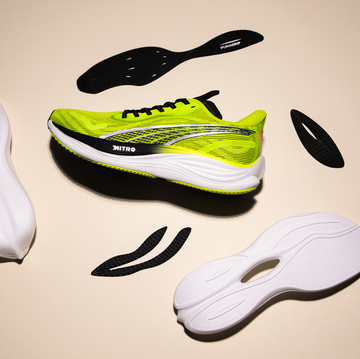Running as fast as possible is how we all start out. When you dash about as a child, it’s simply about seeing how quick your little legs can go.
As we get older, running becomes more measured and tailored towards goals, but there's always that scratch that we need to itch, and that’s why aiming to improve your 5k time is the perfect way to appease your competitive side.
Whether you’re trying to hit 16 minutes or 26, here are my tried-and-tested ways to get a new PB for the best running distance there is (all the while satiating your inner speed demon).
Invest in the right running kit
The psychological power of kit that looks and feels good can play a huge role in getting that PB. I cannot relax if I think my T-shirt doesn’t fit right or my shoes feel clunky, and these small tensions can become magnified, contributing unnecessary stress on race day.
From Runners World for On From Runners World for On is a lightweight, durable, rubberless shoe designed with speed in mind. It feels nimble enough to push the pace in speed sessions but comfortable on slower commute runs.
Persist with speedwork
If you want to run faster, you’ve got to increase your threshold (be that lactate, heart rate or aerobic, depending on fitness). Speedwork is the best way to do this, as it allows you to work for a set period of time at a certain rate or pace, which helps your engine grow to deliver performance on race day.
The great thing about 5k is that you can break it down into manageable parts – I like to go for five 1k chunks. Even if you’re new to running, speedwork like this is all about personal ability, so if you power walk those 1k reps, then stroll the recovery time, you’re still working towards your goal.
My general running fitness isn’t too bad at the moment, but I’ll always start with a benchmark as close to 100% effort for 1km and work back from that. If that goes well, I know I can start the reps close to race pace, and because I want to go sub-20 minutes again, that’s a bit slower than 6:25 per mile/3:59 per km.
I’ll do 5 x 1k reps at this pace with a very easy recovery/rest in between each effort. The recovery can be time or heart-rate based; you just need to allow yourself the chance to catch your breath, so the next 1k rep is achievable. The aim is to increase the pace for each rep as time progresses, meaning that when you stitch those 1k efforts together to run the full 5k, the pace and lack of rest is manageable.
Don't overlook the treadmill
I do one treadmill run a week because it’s time-efficient and totally controllable — ideal for speedwork or, even better, incline reps. If you don’t live near any hills, replicating some on the treadmill helps improve aerobic capacity, engage muscles and condition the body for running hard without any external factors such as weather, route or traffic getting in the way.
Make the most of your commute
I’ve always found the run commute a great way to add steady mileage to the week without overdoing it. I run the commute slowly with a bag full of essentials. It helps increase endurance, aid fat burning (if that’s something you’re after), and, for me, it’s a great way to get to work, be outside and do some loaded running.
Train for fun
Making running all about times and pace can suck the life out of it, so I always keep one run each week to just immerse myself in green surroundings. This is all about recharging your running mojo; it can be as fast or as slow as you want, as long or short – just finish feeling energised and strong rather than overworked and depleted.
Demo run: Cloudmonster Hyper Under Armour’s Flow Velociti Wind 2




















